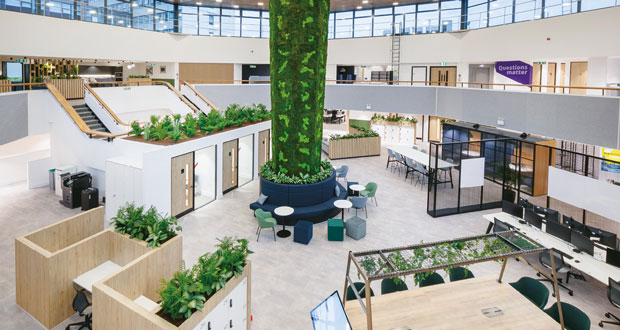FINDING INSPIRATION
As facilities managers are critical to the design process and the subsequent delivery and management of flexible workspaces, it’s helpful to share inspiration and learnings from other workspace projects.
Says Ames: “The good news is that hybrid working is very topical, and many organisations are keen to showcase how they make it work for their people and real estate. Some projects we’ve completed over the last year perfectly showcase how to combine hackable and future flexible design.
“We created a new future flexible space for the gaming business Firesprite, now part of Sony, which epitomises all the elements of a Destination Office. It gives actual choices to colleagues about how and where they work and gives special consideration to neurodivergent people’s needs so that it’s inclusive. Open-plan areas for collaboration, spaces for quiet study and decompression spaces for wellbeing all help to strike a balance between flexibility, inclusivity and individuality. The café is also a hackable space for companywide gatherings.”
Another example is law firm Mills & Reeve in Birmingham, where Claremont is currently onsite. The team is building future flexibility into the fabric of Mills & Reeve’s building by purposefully designing the aesthetics and lighting so that it works on day one and as the headcount grows over time.
It’s not all about employees; thinking about clients is also important. Claremont’s work with Wythenshawe Community Housing Group included a dedicated family space so customers could attend necessary housing appointments without worrying about entertaining their children. Yet another take on achieving flexibility.
Ames concludes: “True workplace flexibility is about mutual gain – it benefits business by adapting quickly as needs change, whether today or tomorrow and empowers employees to work how they see fit. Greater autonomy and choice over how, when and where we work is perhaps one of the most significant gains from the pandemic experience. Falling office occupancy isn’t a sign that the office isn’t needed or that less space is required. It is merely a sign that many employers are yet to unlock its potential by embracing workplace flexibility.”





